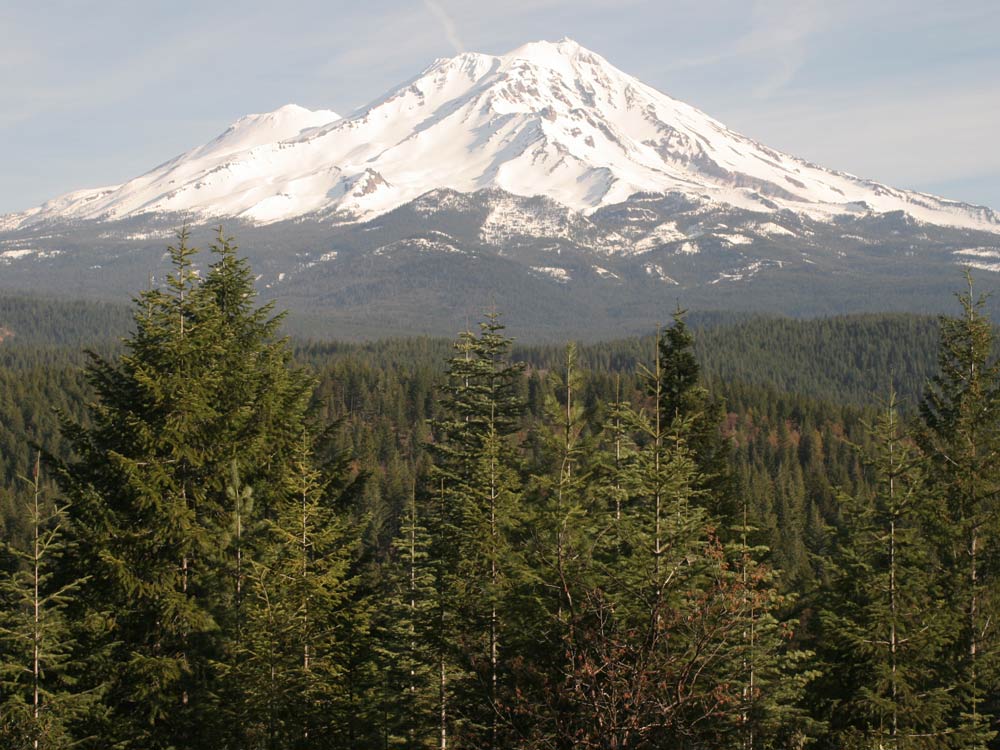
Spring 2024
Sustaining Conservation Gains When Forests Change Hands
Millions of acres of private forest are sold and bought every year, with subsequent changes in management that can impact conservation values such as watersheds and habitats as new owners seek a targeted financial return. How can these values be protected and does that impact the resale of those forests?
Enter Working Forest Conservation Easements (WFCEs): legal instruments that guide how forests are managed and conserved while paying landowners for those management changes that protect conservation values. This ensures both perpetual protection and financial return. These agreements are built to endure beyond individual ownerships and lifetimes and are therefore powerful tools in safeguarding the universal public benefits of private forests, as well as connecting critical habitats and watersheds across private and public ownerships.
Within the vital Mt. Shasta Headwaters region, critical for California’s water supply, carbon stores and wildlife, PFT has established 50,000 acres of WFCEs. These easements, which lead to older, more natural forests that are both more fire and climate change resilient, stand as beacons for this symbiosis between conservation and commerce, regardless of changed proprietorship. Such easements safeguard both resources and resource management, providing continual jobs and income as well as wood, wildlife, water, and wonder. Over 33,000 of PFT’s conserved acres in the region, owned and managed by industrial or financial interests, have been sold since being conserved. All remain in production for both timber products and enhanced ecological outcomes.

McCloud Dogwood Butte
Three of these PFT conserved properties serve as examples illustrating both enduring conservation gains and the practical transferability of conserved working forests. McCloud Dogwood Butte, almost 13,000 acres, was originally conserved with Hancock Timber Resource Group, acquired by Manulife, and is now owned by Hearst Forests. Black Butte Working Forest, 5,000 acres originally conserved with Michi-Cal Timber Products, is now owned by Acer Klamath Forests, a subsidiary of New Forests. Bear Creek Working Forest, 8,250 acres, originally conserved with Roseburg Forests, is now also under New Forests.
Bear Creek Working Forest is at the headwaters of the Fall River, a renowned fishing area. The easement protects more than 50 miles of
waterways serving people, fish and wildlife, and farms across California and complements a similar PFT easement (Bascom Pacific) completing the protection of the entire upper Bear Creek watershed.
Black Butte Working Forest lies at the western foot of Mt. Shasta, strategically located between the communities of Weed and the city of Mt. Shasta. This easement ensures the restoration of
a more natural, diverse conifer forest, significantly increases its carbon stores (as do all PFT projects) and protects habitat for threatened species like the Pacific Fisher.
McCloud Dogwood Butte protects one of California’s most pristine watersheds, the McCloud River. With dozens of cold-water springs flowing into the McCloud, it provides clean, cool water for both the imperiled red-band trout and millions of Californians. It also provides permanent connections between old-growth reserves in the Shasta-Trinity National Forest, benefitting old- growth dependent species, and essential wildlife corridors, as well as access for recreation.
With WFCEs, forest management is consistent over time, achieving long-term restoration and maintenance of multiple forest values and securing critical resources for future generations. By embracing these agreements, landowners can not only protect their financial interests but also play a pivotal role in preserving our natural heritage. In the delicate balance between profit and preservation, conservation easements emerge as a potent tool for sustainable land management and lasting resilience
